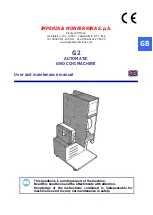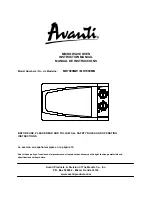
24
3.5 Stainless Steel Care Facts
Stainless steel can present points of “rusng” that ARE ALWAYS PROVOKED BY EXTERNAL
AGENTS, especially when care with cleaning and sanizing is not adequate.
Resistance to corrosion of stainless steel is due especially to the presence of chrome,
which, when in contact with oxygen, allows the formaon of a very thin protecve layer.
This layer is formed upon the enre steel surface, blocking the acng of the external
agents that provoke corrosion. When the protecve layer is broken, the corrosion process
is iniated, which can be avoided by constant and adequate cleaning.
Immediately aer using the equipment, cleaning must be done, using water, neutral soap
or detergent, applied with a so cloth and/or nylon sponge.
Following, with flowing water only, rinsing and drying must be immediately done, with
a so cloth, avoiding the remaining of humidity on the surfaces and especially on the
fissures. The rinsing and drying are extremely important to avoid the formaon of stains
and corrosion.
IMPORTANTE
Soluções ácidas, soluções salinas, desinfetantes e certas soluções esterilizantes
(hipocloritos, sais de amônia tetravalente, compostos de iodo, acido nítrico e
outros), devem ser EVITADAS por não poder permanecer muito tempo em contato
com o aço inoxidável.
For usually possessing CHLORINE in its composion, such substances a!ack the stainless
steel, causing corrosion points (pi"ng). Even detergents used in domesc cleaning, must
not remain in contact with stainless steel beyond necessary, also having the need to
remove them with water and dry the surface completely.
Use of abrasives:
Sponges or steel wool and carbon steel brushes, beyond scratching the surface and
compromising the stainless steel protecon, also leave parcles that rust and react
contaminang the stainless steel. For this way, such products must not be used during
cleaning and sanizing. Scrapings done with sharp instruments or similar must also be
avoided.
Main substances that cause corrosion of stainless steel:
Dusts, greases, acid soluons such as vinegar, fruit juices and other acids, saline soluons,
(brine), blood, detergents (except neutral ones), parcles of common acids, residues of
common sponges or steel wool, as well as other types of abrasives.
13
3.2 Oper
a!onal Procedure
This equipment’s operaon is simple, just follow the sequence below:
1 – Make sure the Movable Table (Item 01 Pic.09) is in place and locked;
2 – Place the product to be processed on the Movable Table;
3 – Pull the pusher using its handle, placing it as shown below:
PICTURE 09
PICTURE 10
01
IMPORTANT
Wait for the display to erase your indica!on before rese"ng the system.




































